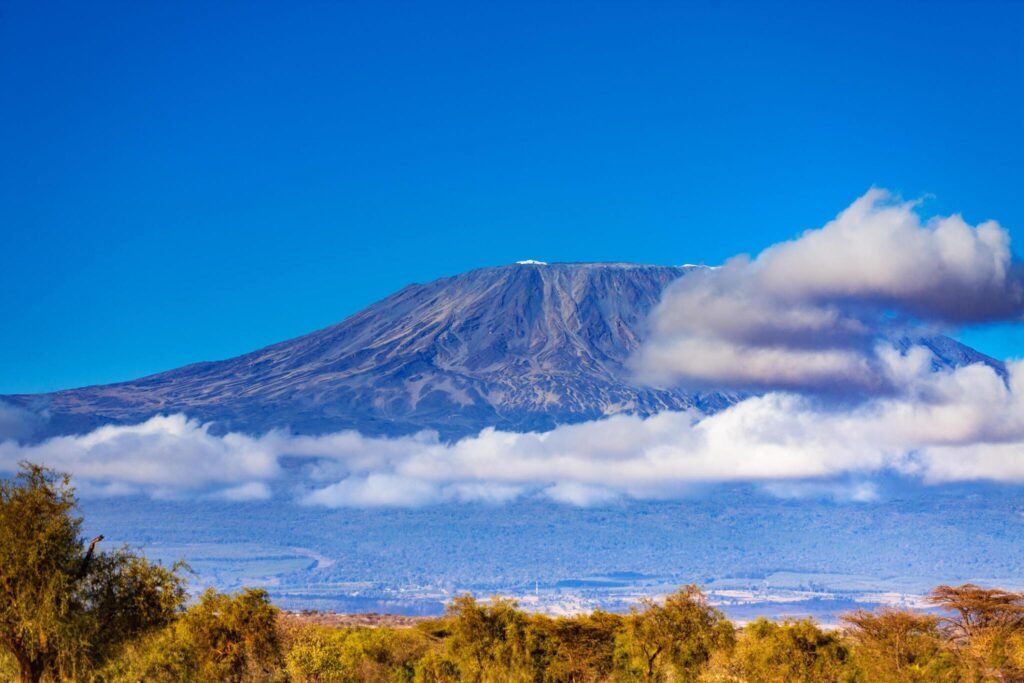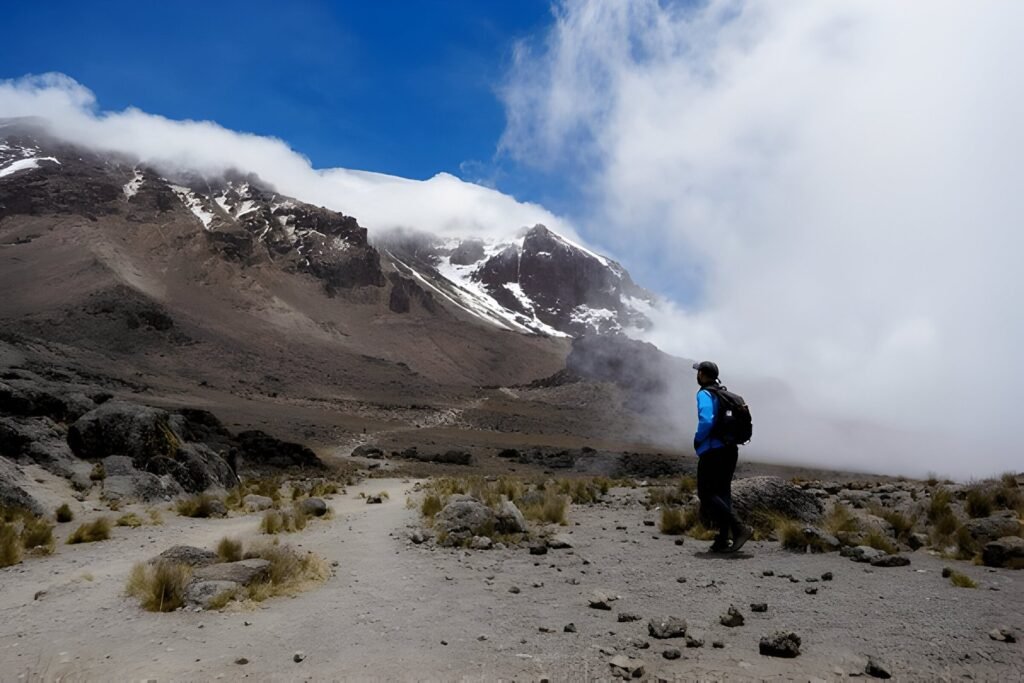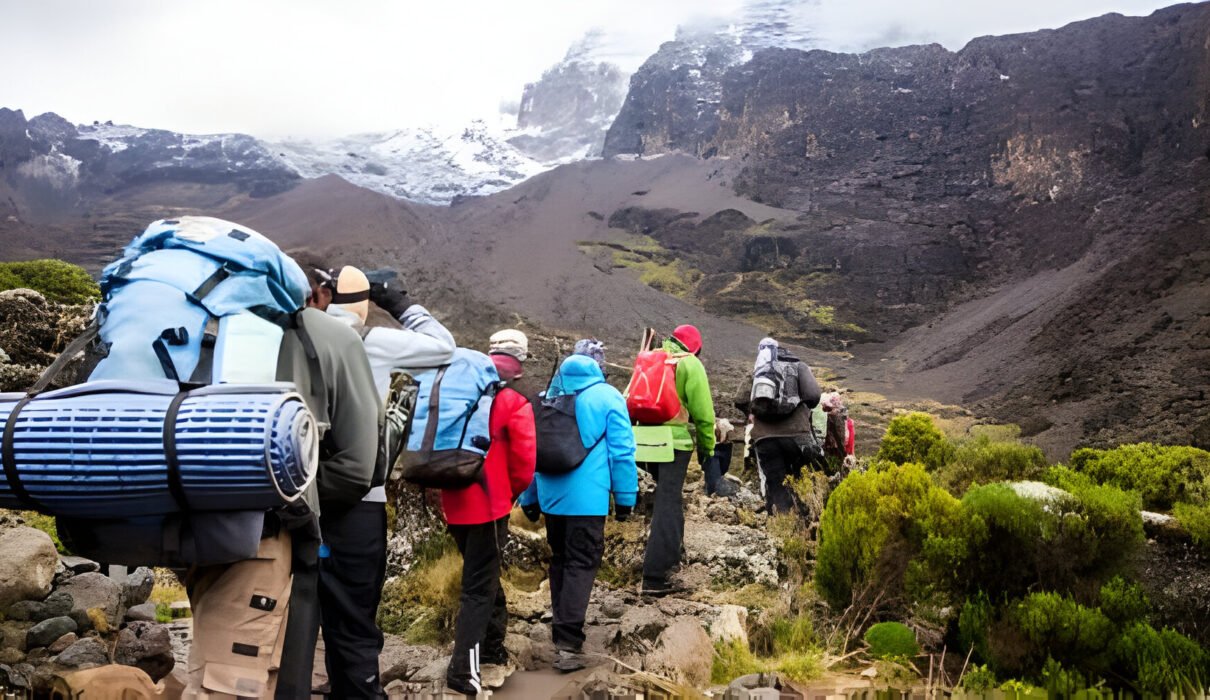Climb Kilimanjaro Without a Guide. Mount Kilimanjaro, standing at 5,895 meters, is a bucket-list destination for climbers. However, if you’re thinking of climbing Kilimanjaro without a guide, it’s important to know that the Tanzanian government strictly requires all climbers to be accompanied by a licensed guide. This policy ensures the safety of trekkers and helps preserve the environment. In this article, we’ll explore the regulations, challenges, and tips for a successful Kilimanjaro trek while understanding why hiring a guide is mandatory.
Start planning your Kilimanjaro trek here.

Climb Kilimanjaro Without a Guide : Is It Possible to Climb Kilimanjaro Without a Guide?
No, it is not legally possible to climb Kilimanjaro without a licensed guide. The Tanzanian government passed a law requiring all trekkers to be accompanied by a registered guide and a support team, which includes porters and cooks. This rule is in place to ensure the safety of climbers and protect the environment.
Why Guides Are Required
- Safety: Kilimanjaro is a high-altitude climb, and guides are trained to handle altitude sickness and emergencies.
- Environmental Protection: Guides and porters help manage waste and ensure that climbers adhere to the “leave no trace” policy.
- Economic Support: The tourism industry provides jobs to locals, including guides and porters, boosting the local economy.
Learn more about the legal requirements for Kilimanjaro climbs.
Climb Kilimanjaro Without a Guide : Understanding the Role of Guides and Porters
Licensed guides play an essential role in ensuring a safe and successful ascent of Kilimanjaro. They are trained in altitude sickness management, first aid, and mountain navigation. Additionally, porters carry your gear and supplies, making the trek easier for you.
Porters and Their Importance
Porters are crucial in helping climbers by carrying food, equipment, and tents. They also set up camps and prepare meals, allowing trekkers to focus solely on the climb. Each climber is typically assigned a team of porters and one guide.
- Weight Limits: Porters are allowed to carry up to 15 kg of gear.
- Ethical Practices: Ensure your porters are treated fairly by choosing ethical tour operators.
Find out more about how guides and porters support climbers.
Climb Kilimanjaro Without a Guide : The Risks of Climbing Kilimanjaro Without a Guide
Although climbing Kilimanjaro without a guide is not allowed, some trekkers may wonder about the risks if it were possible. Without proper guidance, climbers face several dangers, especially due to the mountain’s high altitude and rapidly changing weather conditions.
Major Risks
- Altitude Sickness: One of the most significant challenges is dealing with altitude sickness. Guides are trained to recognize and treat the symptoms, which can be life-threatening if not addressed.
- Navigation Issues: Without a guide, navigating Kilimanjaro’s diverse and often tricky terrain can be challenging, especially in bad weather.
- Limited Support: Without porters and support staff, you’d need to carry all your gear, food, and equipment, significantly increasing the difficulty of the climb.
Learn more about the dangers of altitude sickness.

Climb Kilimanjaro Without a Guide : Benefits of Hiring a Guide for Kilimanjaro
Aside from being a legal requirement, hiring a guide for your Kilimanjaro trek comes with several advantages. Guides offer valuable local knowledge, ensure your safety, and make the experience more enjoyable by providing insights into the mountain’s history, culture, and environment.
Advantages of Having a Guide
- Local Expertise: Guides are familiar with the trails, weather patterns, and potential hazards.
- Cultural Insight: Learn about the local culture, the flora and fauna of Kilimanjaro, and the significance of the mountain to the Chagga people.
- Health and Safety: Guides monitor your health, especially for altitude-related issues, and provide first aid when needed.
Discover more about the benefits of guided climbs.
Climb Kilimanjaro Without a Guide : The Costs of Climbing Kilimanjaro with a Guide
While it’s not possible to climb Kilimanjaro without a guide, understanding the costs associated with hiring a guide and porters can help you budget your trip. The price of a guided climb depends on several factors, including the route, the number of days, and the size of your support team.
Cost Breakdown
- Park Fees: These include entry fees, camping fees, and rescue fees, which are paid to the Tanzanian government.
- Guide and Porter Fees: Your guide and porters must be paid a fair wage, and it’s essential to choose a responsible tour operator that follows ethical practices.
- Equipment and Gear: You may also need to rent gear such as sleeping bags, jackets, and hiking poles.
Get detailed information on Kilimanjaro climbing costs.
Climb Kilimanjaro Without a Guide : Best Routes for a Guided Kilimanjaro Trek
Even though you cannot climb Kilimanjaro without a guide, choosing the right route is crucial for a successful trek. Kilimanjaro has several popular routes, each offering unique experiences and challenges.
Top Routes
- Marangu Route: Known as the “Coca-Cola Route,” this is the only route with hut accommodations and is considered one of the easiest.
- Machame Route: Known for its scenic beauty, this route offers great views but is more challenging.
- Lemosho Route: A longer, more remote route that offers excellent acclimatization opportunities and fewer crowds.
Learn more about the best Kilimanjaro routes.
Climb Kilimanjaro Without a Guide : Preparing for Your Kilimanjaro Trek
While you cannot climb Kilimanjaro without a guide, preparation is key to a successful guided trek. Being physically and mentally ready for the climb will make the experience more enjoyable and increase your chances of reaching the summit.
Training and Fitness
Training for Kilimanjaro should start several months in advance. Focus on building your endurance through long hikes, cardio exercises, and strength training. Being in good shape will help you handle the long days of trekking and the challenges of high altitude.
- Recommended Exercises: Hiking, stair climbing, cycling, and strength exercises like lunges and squats.
- Acclimatization: Gradual acclimatization is crucial for avoiding altitude sickness. Choose a route that allows for proper acclimatization, such as the Lemosho or Rongai routes.
Get more tips on how to prepare physically for your Kilimanjaro climb.
Climb Kilimanjaro Without a Guide : Packing Essentials for a Guided Kilimanjaro Trek
Even with the support of porters, you will still need to pack wisely for your Kilimanjaro trek. Your day pack should include essential items like snacks, water, a camera, and extra layers, while your larger pack will be carried by a porter.
Key Packing Items
- Clothing: Layered clothing is essential due to the varying temperatures on the mountain. Make sure to pack a warm jacket, thermal layers, and a waterproof shell.
- Footwear: Sturdy, broken-in hiking boots are crucial for navigating the mountain’s terrain.
- Health and Safety: Don’t forget to bring sunscreen, a first aid kit, and any necessary medications.
Check out the ultimate Kilimanjaro packing list.
Climb Kilimanjaro Without a Guide : Environmental Conservation on Kilimanjaro
Kilimanjaro is a UNESCO World Heritage Site, and preserving its environment is essential for future generations. The guides and porters are trained in eco-friendly practices, ensuring that the mountain’s fragile ecosystem is protected. They also follow strict waste management protocols, carrying out all trash to keep the mountain clean.
How You Can Help
- Leave No Trace: Follow the “leave no trace” principles by taking all your waste with you.
- Support Responsible Tourism: Choose tour operators that prioritize environmental conservation and ethical treatment of staff.
Learn more about environmental conservation efforts on Kilimanjaro.
Climb Kilimanjaro Without a Guide : Why You Shouldn’t Climb Kilimanjaro Without a Guide
Although the idea of climbing Kilimanjaro without a guide may seem appealing to some adventurers, the risks and legal restrictions make it unwise. Hiring a licensed guide not only ensures your safety but also supports the local economy and protects the mountain. The combination of their expertise, local knowledge, and commitment to environmental conservation makes guided climbs the only responsible way to experience the beauty of Kilimanjaro.
For more information on planning your Kilimanjaro trek, visit Kilimanjaro Climb Specialist or Eddy Tours & Safaris.

